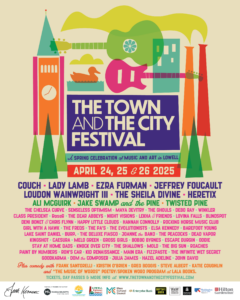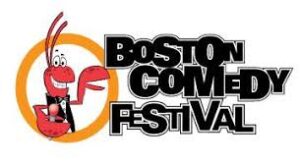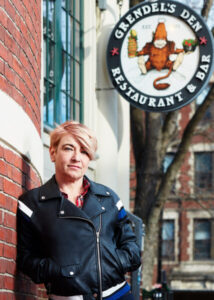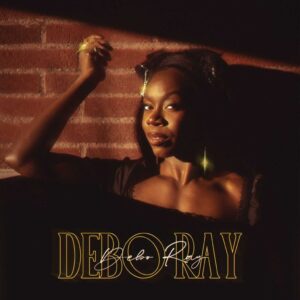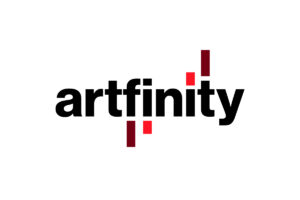No particular place to go: An American musical tour
By Matt Robinson
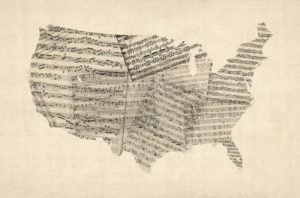
It sounded like a good idea at the time. Go to places where the scene is hot and see what I can see (or hear, I guess). But why was I really going? By the time I got back, I would have been freelancing full-time for four months, I’d be almost halfway to 29 and I would hopefully still have a job offer from D.C. and another one brewing closer to home.
Home.
Boston.
Massachusetts.
I had lived in this state nearly all of my life. Sure, I had traveled, but not as much as I wanted to. And certainly not through my own country. It was time to take that rite of passage. To get out of town and go! This was to be my personal, hopefully musical odyssey.
Day 1: A sort of homecoming
I hadn’t been back to Penn since my stepfather’s 40th reunion in 1997. That this was also my first reunion was a bit of icing, but spoiled by the fact that I was literally the only member of my class to attend. Campus had changed a lot, or so I had heard. What better place to start my journey? After all, the Philly Sound was easily argued to be the source of rock and American Bandstand had corralled Jersey kids by the truckload into the City of Brotherly Love for years. Sure! Philly was to be step one.
Unfortunately, Philly don’t swing much on a Monday. There was a Labor Day block party setting up string lights for hire, but not much in the way of live music. Neither The Electric Factory nor TLA were open. Simply put, the city was as dead as the brass plaques commemorating the heroes of that all-but-forgotten Philly Sound.
As is often the case, however, I found what I was looking for in an unexpected place.
During my revisit to Penn’s campus, I discovered a slice of musical history that had laid dormant during my four years there. Throughout my time at Penn, Irvine Auditorium (http://www.upenn.edu/curtisorgan/irvine.html) was infamous for its poor acoustics and never quite finished aesthetics. Now, after I had been gone a few years (of course), it had been reborn as part of the new multi-building conglomerate known as the Perelman Quadrangle. As part of its rebirth, Irvine had been finally painted, reappointed and acoustically righted and now shone like the spired beacon it was meant to be.
Or had it always been that way?
When I was at Penn, Irvine was rarely used. A few drafty film screenings and the occasional academic event and that was it. During my visit, however, I discovered that Irvine had long had a storied history as one of Philadelphia’s preeminent music halls. From Duke Ellington to Roxy Music, they had come to wow Penn alums and local music fans alike. Though all that was left of these inspiring performances were the newly displayed posters, that even they had returned hinted at future promise.
O that Irvine might shine again!
But enough sentimentality, I was on a voyage and could not afford to get stuck on the first step.
Day 2: Pitt Pop
Heading due west, I stopped briefly at Hershey, PA (a guy’s gotta eat!) before crossing one of the three rivers into Pittsburgh. Though it was still too early in the week to shake the rust off the Steel City, there was a stop to be made which was of significant importance. Significant enough, at least, to warrant sitting through a Pirates game afterwards, in an effort to while away the hours until it was time to hit the road again.
Who was this amazing artist?
Well, while perhaps not so much of an “artist” in the musical sense (though he certainly had a hand and foot in that realm too) local boy Andy Warhol is undeniably one of the most significant shapers of the Pop aesthetic. And while most may know Andy (or claim to know him) as the Campbell’s Soup can guy, his musical aspirations and innovations were impressive to say the least. As producer, cover artist and impresario, Warhol made a mark that has lasted for much longer than his own 15 minutes. And at the Andy Warhol Museum (http://www.warhol.org), much of his work was on display for his fans to cherish and for the uninitiated to learn from. From a platinum album from The Cars to his (in)famous cover to the Stones’ “Sticky Fingers,” the Museum offered a solid glimpse into Warhol’s extra-palette-ular activities. Throughout the permanent collection were photos of Andy with musical friends like Deborah Harry, Rick Ocasek and, of course, The Velvet Underground, with whom he worked closely and on many levels. Though there may have been no official soundtrack to the exhibit, the music was loud and clear.
Day 3: On the road again
Originally, I had planned to make my way towards Nashville, but to take my time and stop along the way, so as to not drive too long or too hard. This was, after all, my first trip of this magnitude, and I was still getting used to what I was up for. However, when I heard that John Mayall was giving a free show in Music City, I dropped the clutch (okay, so it’s an automatic) and headed for Music Row East (or was it West?).
While passing through Cincinnati, I came upon a surprising musical find. No, I did not discover the true home of WKRP. Instead, I found what I thought I would have found in Philadelphia. Rising out of the trees on a highway embankment were those two unmistakable letters, “AB,” as in American Bandstand. It was not the famed warehouse, but it was as close as I was going to get on this trip.
Dick Clark’s American Bandstand Café is a theme restaurant similar to The Hard Rock Café. Loaded with concert paraphernalia, much of which belonged to Mr. Clark himself, the Café offered the typical standard fare at slightly exorbitant prices, all in the name of commercialized nostalgia. From Billy Joel’s blazer and Madonna’s derby hat to a golden 45 presented to Richard Pryor, the collection was impressively diverse. Unfortunately, there was not a bobby-soxer in sight. Instead, tourists and local business folk were eating and talking in relative radio silence, largely unaware of the history around them.
When I got to Nashville (http://www.nashvillecvb.com), the streets were hopping. I had finally hit a sweet spot and was ready to drink it all in! The outdoor show was part of Nashville’s Uptown Mix series which has also brought the likes of Delbert McClinton and Tom Hambridge down from Music Row.
Tonight’s triple bill was opened by Ron La Salle, a thumping, acoustic-led country act, whose Gregg Allman-y twang was a bit too much for my northern ears but whose music was very danceable, even for someone who had been almost eight hours on the road.
During the middle act, I took a break to get to know my local host and some of the many fine people (read women) of Nashville. Sure are a friendly bunch!
Unfortunately, it was easy to tell that I was in the Tobacco Belt because, even at an outdoor venue, the smoke was somethin’ else!
When Mr. Mayall and his latest Bluesbreakers took the stage, however, the smoke cleared (poetically speaking, at least) and the Nashville night rang with the sounds of real live Blues. To see a legend of Mayall’s stature up close (not to mention for FREE) was absolutely a treat! I had found what I had come for, and I had only been in town a few hours!
Day 4: Opry-land
The next day, I got up early and hit the town. First stop Hatch Print Shop (http://www.halloffame.org/hatch/today). What a place! From Johnny Cash to Morphine, these guys have done it all, and all BY HAND! Under the watchful (silhouetted) eye of Bruce Springsteen, the original presses were still there and still humming, to the tune of 600 individually carved posters a year and to the delight of over 25,000 visitors.
Around the corner is the Ryman Auditorium, the former home of the Grand Ole Opry (http://www.ryman.com). Though the Opry has since moved across town to a larger and much more contemporary establishment, the Ryman still shone with the history and grace that made it one of the world’s great music halls. As people stood on the stage to have their pictures taken with a replica of the original mike used since 1891, when Captain Thomas Ryman opened the hall as a tabernacle for his friend and religious leader Sam Jones, I walked along the perimeter, checking out the artifacts from the likes of Minnie Pearl, Roy Acuff and . . . Tony Bennett?
A block away was the brand new, $37 million Country Music Hall of Fame (http://www.halloffame.org). Though the admission seemed a bit steep ($15 for adults with no breaks for traveling journalists) considering I only had about an hour until it closed that day, I did take a moment to marvel at the three-story-high collection of gold and platinum albums, arranged chronologically in the well-stocked gift shop. Just walking among the books, CDs and historical dioramas, which had been taken from the original Hall on Music Row was an education for a Yankee such as me, but the offering of a two-day pass confirmed my suspicions that, for many people, this place was Mecca.
My second night in Nashville was to be a whirlwind tour of music. I started off at the 3rd and Lindsley Bar & Grill (http://www.3rdandlindsley.com). Though located in a strip mall in a neighborhood populated by adult entertainment establishments, the local talent club had an impressive roster, including the Wooten Brothers of Flecktone fame, who play there on Wednesdays. This being Thursday, we were treated instead to Lauren Lucas, a soul-educated rocker, who seemed as if she would be more at home in Memphis, yet who was still able to put out a passable cover of “Angel From Montgomery” as we headed out.
Next stop- Printer’s Alley. Once known as the hub of the music publishing trade, the Alley was now home to a number of theme-y honkytonks. Though most of the hosts/barkers were friendly, our hand-holding invitation into the newly opened Congo Square was too hard to resist.
After winding through a carefully researched replica of New Orleans (so convincing that the mayor of The Big Easy officially authorized the club to host a Mardi Gras parade in Nashville), we came upon the submerged main stage where Toronto transplant Anthony Gomes was laying down some happy Blues.
Though we came into the house band’s version of another overplayed song (this time, “Lady Marmalade”), when the slender Strat slinger took the mic, his bright, soulfully pained licks and surprisingly rich Bolton-esque (but authentic) vocals reached out to the far corners of the drastically under-attended room.
I headed across the Alley to Congo’s longer-established sister club, The Bourbon Street Blues & Boogie Bar (http://bourbonstblues.citysearch.com/1.html). Smaller and with far more of a forced theme feel, the heavily populated (and highly smoky) club rocked to the familiar covers and White Man Soul originals of Stacy Mitchhart and the Blues-U-Can-Use Band. Fronted by a sexy ebony sax and a full-lipped flugelhorn, the BUCU Band was supported by a crashy rhythm section and an almost acrobatic keyboard player. When Mr. Mitchhart brought his spangly Flying V to the stage, the room got a bit crazy, with some patrons going so far as to earn their beads in true Mardi Gras style.
By way of a cool-down, I headed out of town a bit to another strip mall. There, in what had once been a drug store and popular teen hangout, sat The Bluebird Café (http://www.bluebirdcafe.com), a licensed but smoke-free coffee house which has been visited by everyone from Kim Carnes and Peter Case to Christine Lavin and Bonnie Raitt. Tonight, four local singer/songwriters faced off in a song swap in the round (er- square) as friends, family and fans looked, laughed and sang on. Though I may never hear of, or from, any of these four troubadours again, you never can tell.
Day 5: How-dee!
I still had a bit more time to explore Nashville, so after a quick run up and down Music Row, I headed out of town a ways to see The (new) Opry (http://www.opry.com). Though the hall itself was closed, the nearby museum gave a solid idea not only about the history of the Opry and its hundreds of talented members, but also about how the country music scene has shifted and grown over time. There was an exhibit about studio technology and how it has changed and the jukebox was set on endless play!
Next door, the Opryland Hotel (http://www.oprylandhotelnashville.com) offered the largest enclosed garden in . . . well, they weren’t quite sure. Let’s just say it had its own river, made from 1,700 “flasks” of water (funny how they use that term) from over 25 countries.
“It’s an international river,” said the friendly man in the maroon polyester blazer.
As I wandered more or less lost through the expansive atrium, I met people from all over the world, all of whom had come to Nashville on their own pilgrimages, or perhaps for a convention. If nothing else, the hotel made for a great morning walk, and by the time I left, I felt invigorated and ready to continue my meandering quest.
Day 6: Walkin’ in Memphis
Put on my brown leather shoes and I got in the car. Touched down in the land of the Delta Blues. And I didn’t have to drive that far.
Okay, so paraphrasing Marc Cohn’s song “Walkin’ in Memphis” was unavoidable as I pulled into Memphis (http://www.memphistravel.com). But in so many ways, he was right. Though I missed the woman who played piano every Friday at the Hollywood (a casino, as far as I could tell), when I hit Beale Street, I did seem to float a bit. Maybe it was just the relief after an aggravating ride in (route 240 is a pain in the ass), but I did feel something.
Before I got there, though, I had to make a couple of stops. Sun Studios (http://www.sunstudio.com). Founded by the legendary producer, Sam Phillips (the first man to record The King). The real birthplace of Elvis (and Carl Perkins and Jerry Lee Lewis, etc.). When I put my hand on that original doorknob and lead my tour group into the tiny but perfectly preserved one-room recording studio, a chill ran through me. There before me was the organ used by U2 for “When Love Comes to Town,” the dusty Danelectros used by the likes of Paul Simon and Def Leppard and, in the corner, the original microphone used by a nervous young man named Elvis Aron Presley. Though it had been closed for nearly 30 years, even the smell remained. It was a special place indeed!
Down the street a ways (again, after a few traffic-snarled attempts), I found Sam Phillips Recording Services (often referred to as “Sun II”). Unfortunately, nobody was recording that day, so all I got was a photo and some gum on my shoe. Ah well, off to Beale Street.
My first stop on this magical half-mile of pedestrian paradise was the recently opened Rock and Soul Museum (http://www.memphisrocknsoul.org). In this rare partnership between the Gibson Guitar Company (whose factory houses the museum) and the Smithsonian, this not-just-for-tourists exhibition traced the history of Memphis music from sharecropper shouts to Hi Records hits. Along the way, the collection boasted authentic displays of Ike Turner’s “Rocket 88” piano, The King’s “Indian” jumpsuit and Isaac Hayes’s hand-painted Oscar night cape. It was quite a trip!
Downstairs, I was treated to a semi-private tour of the Gibson factory (http://www.gibson.com). Though not all stages of production have been moved from Nashville to Memphis, it was easy to see the hard work and personal pride that went into every new guitar, including a very rare blue “Lucille” model made expressly for another King, B.B. himself.
Back out on the street, I was literally surrounded by juke joints, blues clubs and the sound of joyful music. From Elvis impersonators to local folks strumming guitars they had bought at Schwab’s general store, you literally could not walk a block without being called in to hear a band.
When it got time to eat, I found a real live soul food shop in “the bad part of town” and treated myself to some of the best eats I had ever had. (Sorry, Mom!) By 10 p.m., I was bluesed out and blissed out and decided to retire for the evening. Even as I drove away, though, I began to feel a bit of melancholy. I was really going to miss Memphis.
Day 7 – The pearly gates
Sunday morning in Memphis means one thing: Church. But not just any church. I was off to (hopefully) hear the Rev. Al Green.
Yes- that Al Green!
After getting lost (again), I found my way to the sacred parking lot on the honorary Rev. Al Green Road. As I entered, a public Sunday school session was just finishing and the congregation was asking for its members and guests (who at the time outnumbered the congregants) to volunteer stories and thoughts. As this large group of guests, including people from as far away as Albania, few were up for being first. So after a spirited speech from one of the church’s “missionaries,” the choir took to their pews and the real service began.
Coming from puritanical Boston, I was not used to much personal expression during a religious service. As a result, this Sunday morning concert was quite a shock to my sacred system. But let me tell you, it was one of the greatest concerts I had ever been to. The band was tight and the people were loose and at the end of each and every number, even the New England stiff deacon was up and dancing (or some attempt thereat). After a few rousing and rocking religious numbers, the news finally came that Rev. Green was not in the building.
There was only one place to go to assuage my disappointment: Graceland (http://www.elvis.com/graceland). Whereas Rev. Green’s church had been a site for music in its purest form, The King’s church had become more of a musical factory. Though a prohibition on flash photography had preserved the body (or at least the trappings thereof), the home of Elvis Aron Presley had lost a great deal of its soul. Even the famous Jungle Room seemed tame. However, there were moments of real human intimacy amidst the lucite-cased artifacts. To see Elvis’s devotion to his family and, if not his wife, his daughter (for whom he named his private 727) and to see remnants of the man behind the rhinestones did flesh out the story of a talented young man who was already quite fleshy when I became aware of him. And when I heard that one of The King’s favorite films was “Blazing Saddles,” I really felt a connection.
As I pulled out of Memphis to the sound of The Allman Brothers on the radio, I knew that I was leaving a magical place, a place I would hope to return to someday.
Day 8 – Finding a thrill
It had been a long, hot week on the musical road and I needed a drink BAD! Where else to go but St. Louis; home of Anheuser-Busch? The brewery tour was quite an experience (http://www.budweisertours.com). I had visited the Sam Adams brewery in Boston a number of times, but nothing could prepare me for the millions of cans of Bud that literally surrounded me. When it was all over, I was treated to all the pretzels and lemonade I could drink.
Did I miss something here?
Anyhow, my next stop was the Jefferson Memorial Arch (http://www.stlouisarch.com). Though a bit claustrophobic, the tram ride up the south leg was an amazing trip and the view from the top was gorgeous! When I got down, however, I was a bit at a loss as to what to do next and began to debate the relative merits of pushing on to Chicago. After all, it was a Monday and even the bar-laden district by the River was pretty dead. The National Video Game Museum was closed and the local wax museum was very still indeed.
Before I could leave town, however, I got a call from my friend Laura Cohen, with Virgin Records in LA. When I told her where I was, she gave me some names and numbers of local contacts, all of whom directed me to one place. Right past the campus of Washington University is a funky pub called Blueberry Hill (http://www.blueberryhill.com). Hosting the personal collection of Joe and Linda Edwards, this restaurant/museum contains one of the most eclectic collections of music, sports and Simpsons paraphernalia I had ever seen. From the six Wurlitzer jukeboxes to a Chuck Berry autographed guitar, The Hill’s collection put many Hard Rock Cafés to shame.
As I sat in the front window typing away, I met a bunch of really nice local folks and ate a very tasty (and reasonably priced) Hill-burger. One woman even invited me to stay with her if I couldn’t find any other places. I was surely not in Boston anymore, but that was the point! I was on my way back there, on that most musical of byways, Route 66. And as I passed that first lonely service station, bereft of billboards, vending machines or even asphalt, I knew I was on my way.
Day 9 – The record skips
The first plane hit at 7:55 Central Time.
Day 10 – One last stop
I was now in a race to get home. The world had been turned upside-down and Route 66 would have to wait.
I had one more stop that I had to make, however.
Rising like a crystal beacon on the edge of Lake Erie was I.M. Pei’s musical masterpiece _ The Rock and Roll Hall of Fame and Museum.
From Aerosmith’s induction film to ZZ Top’s Eliminator car, the Museum was a sight to behold.
Four hours later, I emerged with a new appreciation of the music I had grown up with and loved and a head full of new songs to sing on my long drive back to Boston.
All told, it was 3516 miles and nearly 63 hours in the car.
But it was so much more.
I had skipped a few towns and missed a few gigs, but that’s the thing about music- there’s always more.
